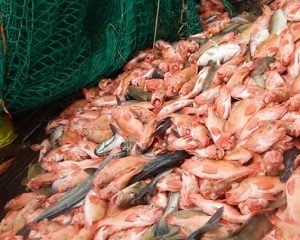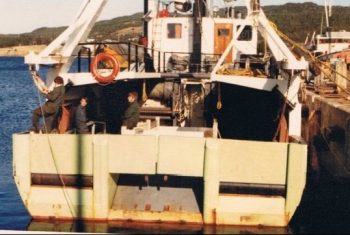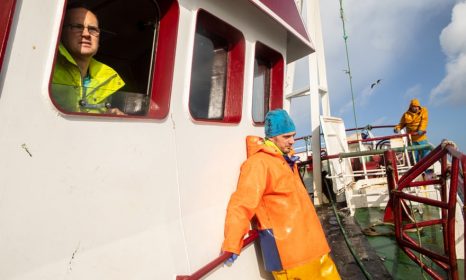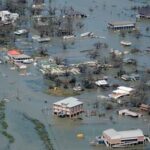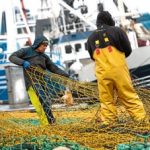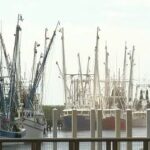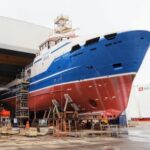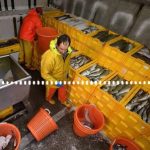Monthly Archives: November 2018

Fighting ALS One Crab Leg at a Time
The Dwyer family has strong ties to Ketchikan and Alaska. Jenny Gore Dwyer was born and raised in Ketchikan. She can trace her family roots back to captain John Gore who sailed with Captain Cook as they tried to discover the “infamous” Northwest Passage. Jenny met her husband Pat on board a fishing vessel in Ketchikan in the mid 1980’s and together they started their fishing business, St. George Marine Inc. After her beloved husband passed away from ALS in June 2013, Jenny became sole owner and president of St. George Marine, working with her children Sean and Brenna to continue to run and grow the family business. Captain Sean Dwyer is currently featured in the Discovery Channel’s hit series Deadliest Catch. More importantly the Dwyer family has become relentless in their goal of eradicating ALS through the Pat Dwyer Fund. >click to read<For more information on the Pat Dwyer Fund >click here< 13:31
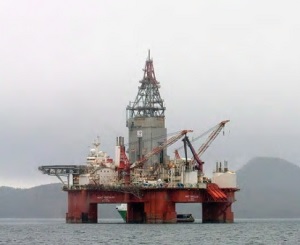
Not prepared – If there is ever a deepwater oil blowout, help could be weeks away
It could take weeks to get a disaster-stopping piece of equipment to Newfoundland and Labrador in the event of a subsea oil blowout, according to documents filed by Statoil, now known as Equinor, the company behind the province’s first foray into deepwater oil development. Documents filed by the company to the Canadian Environmental Assessment Agency in relation to an application for exploratory drilling projects in the Flemish Pass, near the newly-announced Bay du Nord project, indicate that if a well blew, a capping stack — a device used to reign in blowouts — would have to be shipped in from Norway or Brazil. >click to read<11:16
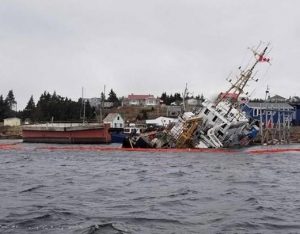
Crews re-float sabotaged coast guard ship in Nova Scotia fishing village
The Canadian Coast Guard has refloated one of its ships after it was cut from its cradle at a Nova Scotia shipyard over a week ago. The CCGS Corporal McLaren had been partially submerged with 2,600 litres of diesel fuel in its tanks and 400 litres of hydraulic fluid on board after it was allegedly sabotaged in an incident reported to police Nov. 17. Keith Laidlaw, the Coast Guard’s deputy superintendent for environmental response, says the operation started Monday afternoon and was complete by late evening, after the shipyard and salvage team pumped thousands of litres of water out of its hold. >click to read<10:47
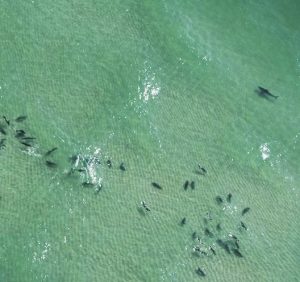
White sharks aren’t the issue. Gray seals are – amend the 1972 Marine Mammal Protection Act
Last summer’s white shark attacks off Cape Cod beaches, one resulting in the first human fatality in the state in over 80 years, highlight the fact that times change, our marine ecosystem is evolving, and laws need to adjust to these changing realities. However tragic those shark attacks are for the victims and their families, the white sharks are not the issue; they simply dramatize it. The ever-increasing population of gray seals is the issue.,, A realistic start to addressing this issue would be to amend the 1972 Marine Mammal Protection Act to provide for delisting recovered species, such as the gray seal. Admittedly, while delisting would not resolve the issues of controlling seal population growth or related white shark attacks, it would be a reasonable first step for the following reasons: >click to read<09:31
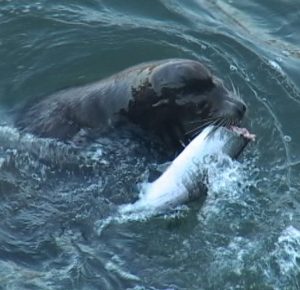
Solution to deal with B.C.’s sea lion surplus? Harvest them, group suggests
Sea lion populations have been on the rise for years and wreaking havoc on commercial fishermen’s catches and equipment, according to the Pacific Balance Pinniped Society. Adult male California sea lions can grow to as big as 800 pounds and consume massive quantities of fish as they grow. “Out in the waters and in our rivers, the pinniped populations have just exploded and we know they’re targeting mainly salmon, steelhead, trout and other fin fish species,” said Thomas Sewid. He believes seals and sea lions are over-abundant in B.C. waters and is spearheading a solution to deal with them. “Not just the natives want to start harvesting pinnipeds,” said Sewid. “This is an industry that can explode throughout coastal British Columbia.” >click to read<21:08

Scarce bay scallops are costly
Last year the Vineyard bay scallop harvest boomed. Prices hovered around $20 per pound. Not so this year. Bay scallops are scant, and at Menemsha Fish Market they were retailing at $38 per pound on Monday. “Nobody went out today,” Larsen said Monday morning, “nice day, too — because there’s no scallops.” Until recently, bay scallops were $35 per pound at the Net Result in Vineyard Haven. As of Monday, they hovered at $30 per pound, which still ranked as the second most expensive seafood there after fresh lobster meat, at $50 per pound. >click to read<19:32
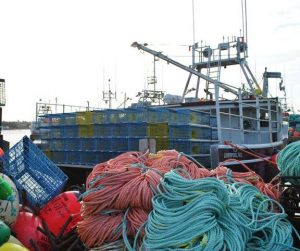
Mid-week decision will be made on a Friday or Saturday start to the lobster fishery
The start of the lobster season that had been delayed for Monday now won’t happen until Friday or Saturday in southwestern Nova Scotia and along the province’s south shore. During a Monday morning 8 a.m. conference call that took place for LFA 34, the decision was made to have another conference call on Wednesday morning to decide on a Friday or Saturday opening. The vote to hold off until beyond Wednesday was made by the port reps given the forecast for the next few days. Fourteen LFA 34 port reps voted no-go until later in the week, two voted to go earlier and one rep abstained from the vote. A conference call took place in LFA 33 an hour later. The decision to hold off until week’s end was unanimous in that call. >click to read<16:39
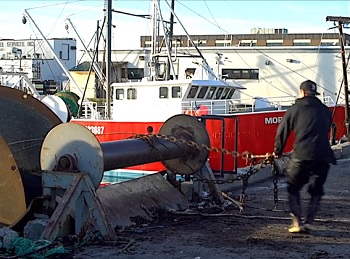
Protect the Working Waterfront: Portland fishermen protest waterfront development
Portland fishermen last week launched a social media campaign urging Portland officials and residents to protect the working waterfront and their livelihoods from development. A group of Portland fishermen released a short video, “12 Little Wharves,” as part of the campaign. In the video, fishermen cite the economic activity generated by the wharfs for Portland and Maine in general.”There’s no place left in America like Portland where we have these 12 little wharves that are so unique, that still produce product for the state,” fisherman Willis Spear Jr. says in the video >click to watch<. “They not only provide safe harbor to small vessels in a storm but they’re a big part of the economic engine for the city of Portland.” >click to read<15:30

After six years of tracking mackerel in the North Atlantic, scientists have uncovered a few fishy secrets.
Do mackerel outcompete herring? And does the fact that mackerel are so widespread in the Nordics mean that their populations are booming? Researchers have spent six years trying to answer these and other questions, and the answers are now beginning to come clear. Their efforts are motivated by more than just academic curiosity. Researchers’ recommendations help shape international quotas that help protect fish stocks, which in the case of mackerel have had a rocky history. >click to read<13:14
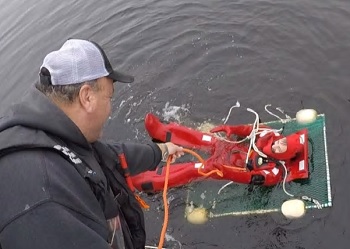
Fishermen train for a rescue in an industry full of danger
The thick red neoprene of my survival suit pressed my nose flat against my face, as I flopped into the makeshift rescue rig. A winch above strained to pull me from the dark water. The rope snapped. I plunged back down, spat out salty water and bobbed to the surface. “And that’s why we do the drills,” said Matthew Duffy, a safety advisor with the Fisheries Safety Association of Nova Scotia. Duffy stood on the boat above me in Port Mouton, N.S., next to a sheepish captain who later vowed to buy a new rope. On an adjacent wharf, dozens of fishermen watched our mock rescue. >click to read<12:41

Lobster boat sinks 11 miles off Jonesport, crew rescued by good Samaritan Bad Behavior
A lobster boat sank off the Jonesport coast in Down East Maine on Sunday. “There were two people on board the fishing vessel Overtimer. The boat was loaded with lobster traps when it took heavy waves and sank 11 miles off Jonesport. … Both people (were) recovered safely,” said a post on the Coast Guard’s Twitter account. On Sunday afternoon, the Coast Guard reported that people aboard the Overtimer had donned “survival suits” before abandoning ship, and that they were recovered by a nearby fishing boat, Bad Behavior, which transported the survivors to shore. >click to read<
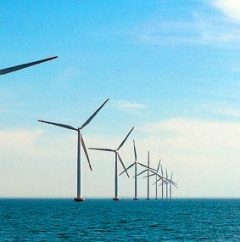
Vineyard Wind Project Hit with Setbacks as Deadline Approaches
Vineyard Wind, the 94-turbine wind facility proposed for south of Martha’s Vineyard, was dealt a setback recently when it was denied an extension to complete a review by Rhode Island’s Coastal Resources Management Council (CRMC). The developers, Copenhagen Infrastructure Partners and Avangrid Renewables LLC, already received additional time and wanted a seven-week extension to settle objections from fishermen and CRMC staff. The project is under pressure to get approved so that it can meet deadlines for financing and qualify for a federal tax credit. KILL IT! >click to read<16:57
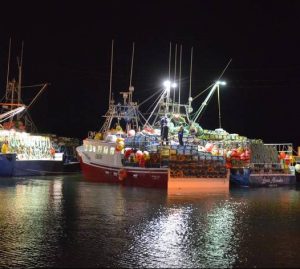
Monday start to LFA 33/34 lobster season in southwestern N.S. and province’s south shore being delayed
The start of the province’s largest and longest lobster fishery in LFAs 33 and 34 is being delayed due to winds and won’t start Monday, Nov. 26. The last Monday of November is traditionally the start of the season, but that’s only if the weather permits. The decision to postpone the start of the season was made during conference calls for both districts Saturday morning, Nov. 24. The next conference calls to determine if there will be a Tuesday or Wednesday opening are scheduled for Monday morning. The conference call for LFA 34 (which takes in southwestern Nova Scotia) will be Monday morning at 8 a.m. The call for LFA 33 (which takes in the province’s south shore) will be Monday at 9 a.m. >click to read<16:04
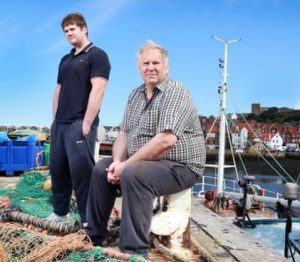
Fishermen ‘betrayed’ after Brexit talks on policy end in stalemate
Richard Brewer is a fifth-generation fisherman who has worked on the seas for more than 40 years. Today his trawler, the White Heather VI, is the last fishing boat left in the now eerily quiet Whitby harbour on the Yorkshire coast. “We used to be a big white fish port, it was a hive of activity, you could have come down here just six or seven years ago and you could barely move for all the forklift trucks shifting fish. Now you’ve just got a few lobster pots,” says 64-year-old Brewer. Britain’s fishing industry had been struggling to survive, and its last hope, according to most of the nation’s fishermen, was Brexit. >click to read<14:49
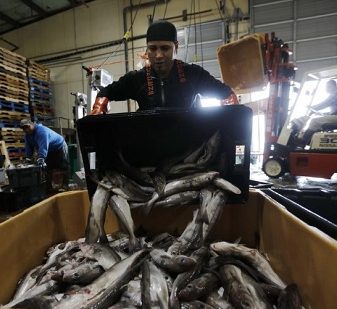
Don Cuddy – Seafood comes in many forms — how fresh is yours?
We live, as we are often reminded, in the top grossing fishing port in the United States and have some of the planet’s most productive fishing grounds right off our shores. So for those among us who enjoy and appreciate the harvest of the sea, and its clean, healthy, wild-caught protein, there is no better place to live than New Bedford. Lately however I have begun to wonder just how many people around the SouthCoast are fish eaters and include our excellent seafood as a regular part of their diet? Apart from perhaps ordering fish and chips or fried scallops in a restaurant on a Friday night that is. That counts certainly but what I have in mind is selecting some seafood at the market and bringing it home. >click to read<12:29
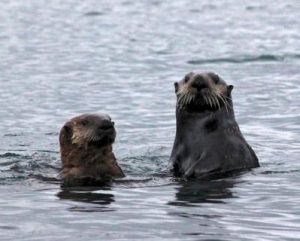
Nonprofit would bring sea otters back to Oregon. Commercial fishing industry isn’t so sure
“For about 110 years now, there’s been a big hole in our environment,” said Peter Hatch, a Siletz tribal member living in Corvallis.,, Hatch recently joined the board of a new nonprofit dedicated to bringing the sea otter back to Oregon waters. The group is named the Elakha Alliance,,, But excitement is not the unanimous response. “The notion of full-scale reintroduction of otters makes me feel very apprehensive because we don’t know how that will affect commercial fisheries,” said Newport crabber Bob Eder. Eder’s concerned that reintroduction could change his industry. >click to read<20:33
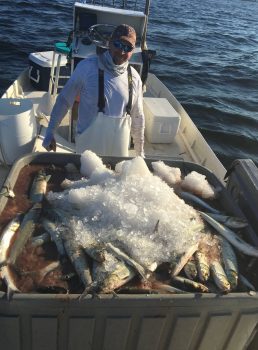
Commercial fisherman changes tactics to keep boat full amid evolving landscape
At 4:30 a.m., Tony Keehbauch is up for work to get his day started. By 5:30 a.m., he’s out the door, heading to the fish house to unload the previous day’s catch, a day that ended less than 12 hours earlier at sunset. Keehbauch gets his Carolina Skiff reloaded with fuel and a fresh load of ice before heading off to a variety of destinations along the west coast of Florida to start another day of commercial fishing. “I started chasing mullet in 1994 and learned how to make my own cast nets,” said Keehbauch, who moved to Florida from Michigan in 1986. “I’ve always been able to catch fish good, it’s in my blood or something. “I went full time commercial fishing about five years ago when I discovered I could make a living hook and line fishing.” >click to read<19:19
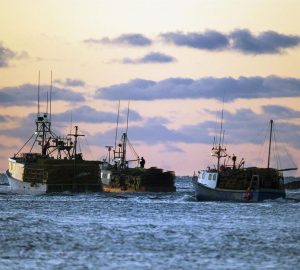
Weather Delay – ‘You can’t beat Mother Nature’: start of lobster fishing season postponed
Lobster fishing season in southwestern Nova Scotia will be off to a late start this year after officials postponed the day that fishermen were slated to drop their traps — also known as “dumping day.” The season was supposed to kick off on Monday, but Fisheries and Oceans spokesperson Debbie Buott-Matheson said based on forecasted weather, the industry associations representing lobster fishing areas 33 and 34 decided in a Saturday morning conference call that it would be too risky to proceed as planned. >click to read<14:32

BOEM elaborates on map for New York Bight areas for offshore wind
Walter Cruickshank, the acting director of the Bureau of Ocean Energy Management, provided some details to an otherwise ambiguous map the agency released last week for potential offshore wind sites along the New York Bight Call area. The map featured four sections of land off the coasts of Long Island and New Jersey and included shaded areas deemed as “primary recommendations” and “secondary recommendations.” The labels left commissioners at the Port Authority confused. >click to read<13:43
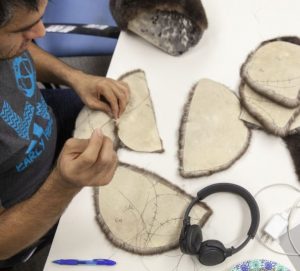
Otterskin sewing workshops promote ‘sustainable cottage industry’ in coastal Alaska
A series of workshops in communities around Southeast Alaska aims to expand the practice of traditional Alaska Native skin-sewing with seal and sea otter fur.,,, In the last few decades, things have been looking up for sea otters in Southeast Alaska. The last official count put their number well over 25,000 and growing. “It’s a very thriving population growing probably 10 to 12 percent a year,” Lee Kadinger said. “The otters are starting to show up more around Ketchikan now, so we got to start getting rid of them. They kill all our crab, and I love crab,” Leask said. “There’s got to be a little bit of population control.” >click to read<11:56
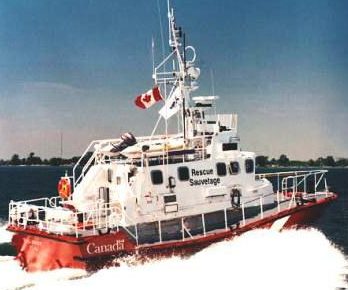
Not ready for Prime Time? Coast Guard rescue boat breaks down on way home after refit
A Canadian Coast Guard rescue lifeboat broke down twice this month en route to its Nova Scotia home port after a refit, CBC News has learned. The CCGS Clarks Harbour is still undergoing repairs at the West Head wharf on Cape Sable Island, but the Coast Guard said it will be available for the winter lobster season in southwest Nova Scotia, which is just days away. “The fact it’s not in service is that we are conducting ongoing maintenance and ensuring it’s ready to go for the opening,” said Wade Spurrell, acting Deputy Commissioner of the Canadian Coast Guard. >click to read<10:15

Falling overboard is the second biggest killer of U.S. fishermen, second only to vessel sinkings.
From 2000 through 2016, 204 fishermen died after falling overboard. Nearly 60 percent were not witnessed and nearly 90 percent were never found. In every case, not one fisherman was wearing a life jacket. “I think there is a social stigma against it. It doesn’t look cool, it’s a sort of macho thing. I also think there is a lack of awareness of the fact that there are really comfortable, wearable PFDs.” Jerry Dzugan is director of the Alaska Marine Safety Education Association. >audio report, click to read<16:32
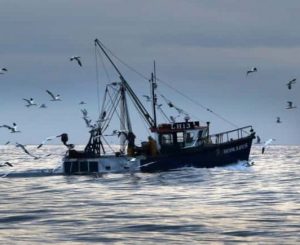
Brian Wilson: The scales must fall from our eyes
The Scottish fishing industry is in the hands of a wealthy few – but will Brexit, whatever form it takes, change anything, asks Brian Wilson Let’s be honest – the vast majority know little about the fishing industry while evincing general sympathy towards those who go to sea in order to put food upon our tables. When fishermen protest about the Common Fisheries Policy they tend to benefit from that empathy because it is easier to concur that “Brussels is to blame” than look for villains closer to home. >click to read<16:03
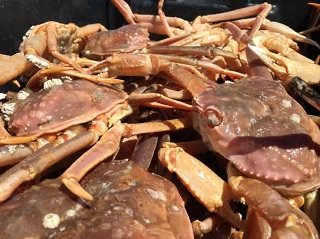
FISH-NL accuses FFAW of fake outrage and hypocrisy over new snow crab management strategy
The federal Department of Fisheries and Oceans (DFO) held meetings earlier this week in St. John’s, Clarenville, and Gander to consult inshore harvesters on a proposed new management strategy for snow crab. The so-called Precautionary Approach includes stock status zones such as critical, cautious and healthy, as well as reference points and harvesters control rules. A huge contingent of FFAW-Unifor executive members slammed DFO at the public meetings for blindsiding inshore harvesters, accusing the department of bringing them into the discussion at a “late stage.” >click to read<

Researchers work on better model for impact of fishery closures
Fisheries managers are faced with a firestorm every time they decide to close a fishery because of poor returns or low population numbers. A new economic model is trying to help them see into the future to understand the effects of a closure before it happens.,, It takes into account items like fishery participation, the amount of each vessel’s annual revenue that comes from the affected fishery, which vessels participate in other fisheries and the value of the fishery; the aim is to calculate the total impact when managers have to limit or close a fishery. >click to read<11:59

‘Lobster War’ zones in on U.S.-Canada turf dispute
“A fisherman is born not made.” Those words, from the film Lobster War, may ring true to the island fishing community, and to fishermen throughout New England, Canada and beyond. And, just as lobstermen often pass their expertise and way of life down through the generations, so, too, can turf conflicts begin over long-held family fishing areas. In Lobster War, the disputed turf is 270 square miles of ocean on the U.S.-Canada border, and the “families” are Maine and Canadian lobstermen. >click to read<11:12

SAR resources will be in place for lobster season opening in southwest Nova Scotia
A full complement of Search and Rescue (SAR) resources will be on the water and standing by when the commercial lobster fishery in LFAs 33 and 34 opens. “We’re in the business of planning for the worst and hoping for the best,” said Marc Ouellette, Canadian Coast Guard Regional Supervisor for Maritime Search and Rescue at the Joint Rescue Coordination Centre (JRCC) in Halifax.,, Ouellette said there’s a strategy in place for the opening of the LFA 33 and 34 fishery, which is repeated every year without too much modification and is based on the amount of marine traffic and the risk identified through studies of what is high risk for SAR coverage. >click to read<10:21






